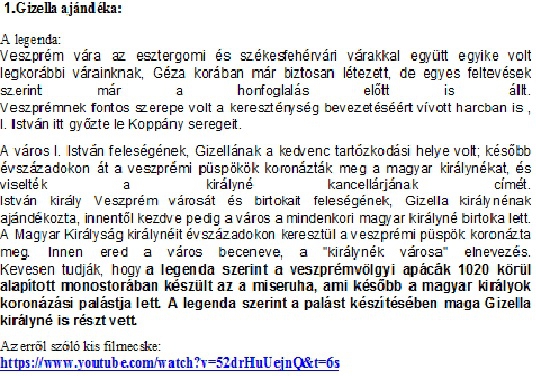This square is situated at the foot of the VeszprÃĐm Castle, by the SÃĐd stream. It was renovated in 2011 and the fountain is also a drinking-fountain as well. If you are thirsty, have a sip of the cool VeszprÃĐm water! From the square a wonderful view opens to the Castle, you can observe the rear terrace of the Archbishopâs Palace and the harmony of the buildings in the Castle Street. The SÃĐd stream is 70 km long. The meaning of âSÃĐdâ is stream. Can you imagine that once upon a time 12 watermills functioned in VeszprÃĐm? The town took pride in its major milling industry. Today there arenât many mills left. However next to the Kutas square you can find the former Ring mill building which was mentioned in records of 1275.
Here stands the ÃrkÚti mill, too, one of its two buildings now functions as a restaurant. Between the two mills was the mill ditch, and its water operated the millwheels. The present restaurant building was the grain mill and the one with the wooden veranda was the pump house of ÃrkÚt well. Underneath the veranda,replicas relojes nearly in the bed of the SÃĐd lies the ÃrkÚt, from this font was created the aqueduct by Henrik Tummler in between 1763-67, which supplied the water for the Archbishopâs Palace. At that time it was a leading technical achievement to push water 40 metres uphill from the ÃrkÚt font to the palace. For his great work he obtained a noble charter and received the honour to plan the aqueduct in Buda, too.
Margit-ruins
The ruins of the St Catherine Dominican convent are known as Margit-ruins, they are located in VeszprÃĐmâs DÃģzsa district by the side of the SÃĐd stream in Margit square. The convent and the neighbouring church were founded by Bishop Bertalan of VeszprÃĐm in 1240. The VeszprÃĐm convent was the first Dominican nunnery in Hungary. Its most famous resident was the daughter of our King BÃĐla IV. St Margit lived here from 1246 till 1252, until she was relocated to the island of Rabbits (now known as Margit Island in Budapest). In the convent the Dominican nuns raised and educated her. The present name of the ruins commemorates her. Because of the increasing level of threat from Turkish invasion the nuns escaped from VeszprÃĐm in 1552 with the treasures of the convent. The monastery was completely ruined during the Turkish occupation. The ruins of the walls can be found at the foot of St Benedict hill. In 2011 a circular labyrinth-style fountain was created next to the ruins, which quickly became the childrenâs favourite place to splash in! Have a look around, you may notice that in planning the surrounding park the designerâs goal was to create a park devoted to the soul of the monastery. The sight of the Castle and the Benedict hill from here is just splendid!
Ruins of Greek nun monastery of VeszprÃĐmvÃķlgy
The Greek nunnery in VeszprÃĐmvÃķlgy was one of the first convents in Hungary, it was founded by St Stephen around the Millennium in 1018 for the Greek orthodox nuns who followed the Byzantine wife of St Emeric. Do you like legends? We can find one for this location too.
Queen Gisela embroidered here the holy vestments and in 1031 this was then converted into the royal mantle and has been used continuously until the very last coronation in 1916 (Charles IV.). This legend could have some truth! Because the medieval queensâs job used to include the decoration of the church altar cloths and vestments and the care of the regalia robes, too. VeszprÃĐm,replicas de relojes since the reign of St Stephen was the seat of our Queens. From 1018 Queen Gisela often spent time in VeszprÃĐm. Consequently, next to her accommodation a Greek orthodox monastery was built for her future daughter-in-law. Many female members of the royal family, who were banished from their homes, found here refuge. Including Judit, the Hungarian wife of BoleszlÃģ BÃĄtor, a Polish prince. Judit's son, Prince Bezprim, later became the land-steward of VeszprÃĐm Castle and according to legend the name of VeszprÃĐm comes from him.
The renewed Jesuit church is situated next to the ruins. Interestingly it never functioned as a church and was never consecrated. Its construction started in 1740, but only 270 years later was it finally completed in 2010. Then it was consecrated for many denominations and became a place for ecumenical services. Currently it is a location for exhibitions and concerts.
In this area of the Betekints valley operated the VeszprÃĐm amusement park until the 1970s. A little train ran from the boating lake to the zoo and back. After the decline of the amusement park the area became very neglected, only in 2011 with an European Union grant was it renovated. During the creation of the walking routes and the bicycle path were revealed the embellished historic al monuments from the 11th century ÃrpÃĄd era. Also the Jesuit church was revitalized into a patinated event location for the city. Around the historic monuments significant landscaping work has been conducted, a pond and three new playgrounds were also created. The walking route connects the cityâs two main tourist attractions: the Zoo and the Castle.





















































